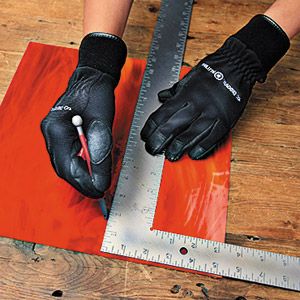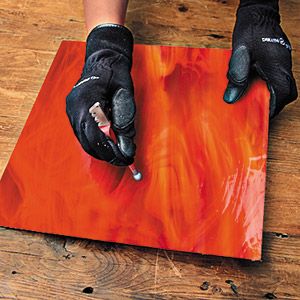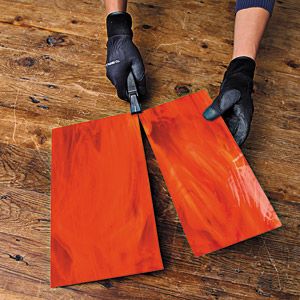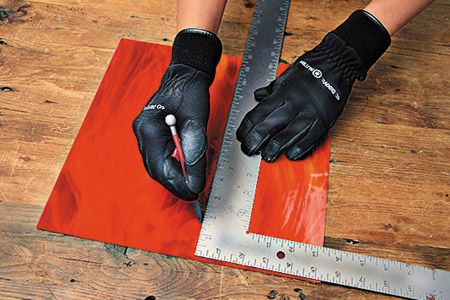


Cutting glass to replace a broken windowpane doesn’t necessarily require the services of a pro. All it takes is the proper tools and technique. The key is a glass cutter, a pencil-size piece of metal with a tiny, superhard tungsten-carbide wheel. The wheel scores the surface, allowing you to snap the glass cleanly. Wear goggles for eye protection and gloves to guard against cuts, then follow these steps suggested by Jim Anderson of Jim Anderson Stained Glass in Boston, who has 35 years of experience making and repairing stained-glass windows.
Clean. Wipe the area to be cut with a clean cloth or paper towel; dust and grime on the glass can interfere with the score. If you use glass cleaner, be sure the area is completely dry before scoring. Lay the glass on a hard, flat surface. For straight cuts, use a metal ruler or square to guide the cutter. For curves, draw a line on the glass with a felt-tip marker.
Score. Before scoring, lubricate the wheel with glass-cutting oil, such as Novocan. Then, holding the cutter as you would a pencil, press down firmly and pull toward you in one continuous motion. Keep consistent pressure as you move the cutter along the glass, so it will score evenly.
See Image 1 on left slide
Tap. Gently tap along the score line a few times with the cutter’s ball end. Tapping generates shock waves that weaken the glass, allowing it to break.
See Image 2 left slide
Snap. Grip the ends of the glass on each side of the score and twist your wrists to break the pieces apart. If a piece cannot be broken by hand, use glass-breaking pliers known as running pliers to get the job done. Line up the notch in the pliers’ upper jaw with the score line, then squeeze the handles gently until the glass breaks. When breaking curved cuts, place the pliers’ jaws on the score line, squeeze the handles to grip the glass, and then pull down to snap a section off. Repeat until the break runs to the halfway mark. Then move the pliers to the other end of the score line and repeat. The same half-and-half technique works when breaking curves by hand.
See Image 2 left slide

